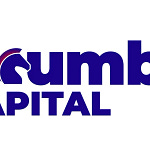This was published last week - but now getting out of date - so moving it to free
The S&P 500 has bounced and VIX has dropped back to 20 over the last week.
Unusually, this rip higher in equities has not coincided with a bounce in high yield bonds (HYG is a high yield bond ETF).
Also the spread between spot VIX and 6 month generic VIX (UX6) has moved back to close to 5, suggesting VIX is too low. The combination of very low VIX and not confirmation from HYG still suggests selling the rip here.
In my last note, I did not explain why VIX could be mispriced, which I will do now for paying subscribers. Free subscribers will get the full note next week.
Long time readers will know of my interest in the autocallable market. This is a product popular in Korea and Europe that sells volatility to produce a high yielding product. It is a very countercyclical product, with issuance strong when VIX is low, and very low issuance when VIX is high. Autocallables sell VIX - but have to buy it back if it rallies to much against them. Hence the safest time to buy the dip is when the autocallables have blown up - like in 2016 and 2020.
Below shows the relationship between VIX and autocallable issuance. The big fall in issuance in 2015 was due to a blow up in the HSCEI market, while 2020 is obviously COVID. Issuance is still strong, suggesting that a VIX sell off could go much higher than what we have seen so far.
Looking at the relationship of high yield and VIX, current VIX levels look too low.
With commodity prices still firm, and inflation pressures not abating, it still looks like sell the rip to me.
















